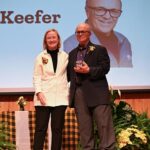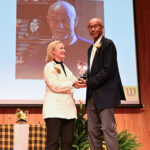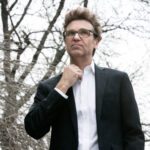
It takes a lot of math (and physics) to win an IndyCar championship
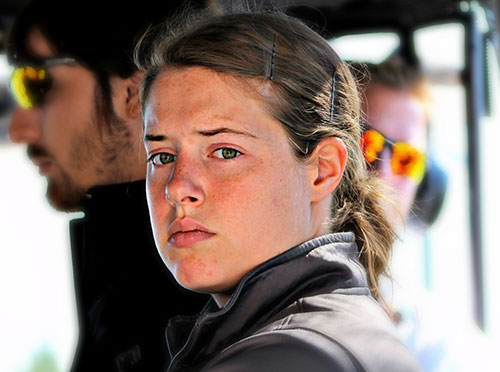
Danielle Shepherd was just seven years old when she attended her first IndyCar race with her family. Apparently, the roar of 700 horsepower engines and the sight of sleek, low-slung cars screaming around a track at speeds in excess of 200 mph made quite an impression, because by the time she arrived at Wooster, her career goal was to work for an auto racing team.
Today, thanks to an APEX Fellowship, the support of her faculty mentors in the math and physics departments, a Wooster alum who helped her make connections in the industry, and long hours of hard work, that dream is a reality. Shepherd is a simulation engineer for the #9 car of PNC Bank Chip Ganassi Racing, driven by five-time IndyCar Series champion Scott Dixon.
An IndyCar can cost as much as $3 million, and each one is loaded with electronics that gather data about its performance while on the track, from individual tire pressures and brake temperatures to the loads being placed on each component of the suspension. Shepherd helps turn that information into intelligence, running dynamic, real-time simulations during practices that model the complex interplay of weather, track conditions, and potential changes in the aerodynamic configuration of the car, so the race engineer can make decisions about adjustments in the car’s gearing and ride height – which can be adjusted in increments as small as one-third of a millimeter – for race day.
During race season, which runs from April through September, she is on the road roughly every other week to a different race: from Long Beach, Cal., to Watkins Glen, N.Y., Texas to Toronto. Typically, the team arrives at the track on Thursday, practices (and analyzes data) on Friday, then practices again and qualifies on Saturday. Sunday is race day, then Monday it’s back to Indianapolis to work on the car in the shop and get ready to do it all again.
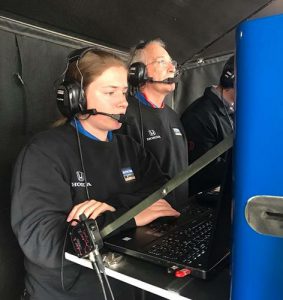 Despite being one of only four women working as engineers in the entire IndyCar series, Shepherd says, “I definitely don’t see myself as a role model [just for women]. I hope to be an engineer who inspires boys and girls to pursue a career in racing.”
Despite being one of only four women working as engineers in the entire IndyCar series, Shepherd says, “I definitely don’t see myself as a role model [just for women]. I hope to be an engineer who inspires boys and girls to pursue a career in racing.”
The chance to do independent research with the close support of a faculty mentor was what drew Shepherd to Wooster, and she plunged right in, completing a Sophomore Research Program project on knot theory with Professors John Ramsay and Jen Bowen of the math department, then an Applied Methods Research Experience (AMRE) consulting project.
The summer following her junior year, Shepherd landed an APEX Fellowship to work with a mathematics professor at Davidson College who was doing some applied research for Michael Waltrip Racing. The experience reconfirmed her desire to work in the motorsports industry.
Back in Wooster for her senior year, Shepherd did her I.S. on computational fluid dynamics, writing a computer simulation to model fluid flow around a circular object. Following graduation, she landed a job with Kent Displays, but stayed in touch with Chris Abele ’02, a race engineer who helped her make connections in the field and alerted her to open positions. A bit less than a year later, she joined KVSH Racing. After two seasons with KVSH, she moved to Ganassi in December 2016.
“…Wooster teaches you how to learn and how to think and how to problem solve. I know how to tackle a big project, how to motivate myself, and strive for a goal, and get from point A to point B. Wooster teaches you to strive to be the best that you can be.”
“The last four years have been all about learning and figuring out what it really means to be in racing,” Shepherd says. “There’s a great group of people here and I just keep soaking it all in. I never had a vehicle dynamics class at Wooster, but Wooster teaches you how to learn and how to think and how to problem solve. I know how to tackle a big project, how to motivate myself, and strive for a goal, and get from point A to point B. Wooster teaches you to strive to be the best that you can be.”
Posted in Alumni on September 18, 2018.
Related Posts
Related Areas of Study
Physics
With one-on-one guidance from a faculty mentor, every physics major completes independent research in a year-long research project
Major MinorMathematics
Numbers + patterns + structures multiplied by a zest for analysis and inquiry
Major Minor
